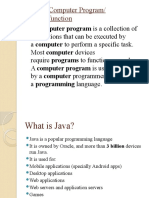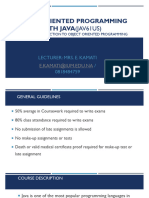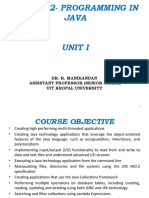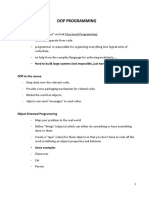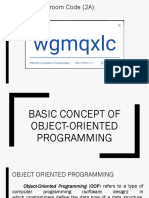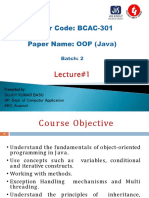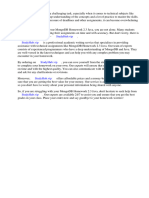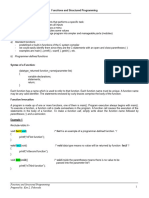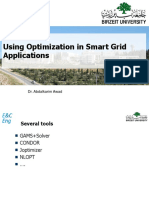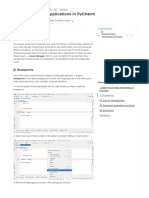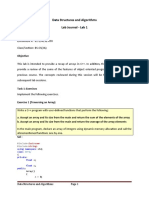0% found this document useful (0 votes)
40 views3 pagesIntroduction To OOPs Class9
This document introduces Object-Oriented Programming (OOP) concepts for Class 9 ICSE students, highlighting the differences between procedural and object-oriented programming. Key OOP concepts such as classes, objects, encapsulation, abstraction, inheritance, and polymorphism are defined and explained. The document also includes example Java code and practice questions to reinforce learning.
Uploaded by
debaleena bhattacharyaCopyright
© © All Rights Reserved
We take content rights seriously. If you suspect this is your content, claim it here.
Available Formats
Download as PDF, TXT or read online on Scribd
0% found this document useful (0 votes)
40 views3 pagesIntroduction To OOPs Class9
This document introduces Object-Oriented Programming (OOP) concepts for Class 9 ICSE students, highlighting the differences between procedural and object-oriented programming. Key OOP concepts such as classes, objects, encapsulation, abstraction, inheritance, and polymorphism are defined and explained. The document also includes example Java code and practice questions to reinforce learning.
Uploaded by
debaleena bhattacharyaCopyright
© © All Rights Reserved
We take content rights seriously. If you suspect this is your content, claim it here.
Available Formats
Download as PDF, TXT or read online on Scribd
/ 3









